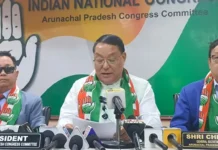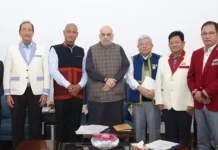[ Dr Pebam Munindro Singh ]
Genesis
The 28th of February is celebrated as National Science Day (NSD) in our country since 1987. It is considered one of the biggest science festivals celebrated in various forms in schools and colleges, and state and national science institutions. This day is of utmost importance in the history of science for the remarkable discovery of the famous phenomenon, The Raman Effect (scattering of light by materials), by Indian physicist Sir Chandrashekhara Venkata Raman, on this day in 1928 in his laboratory at the Indian Association for Cultivation of Science (IACS), Kolkata, for which he was awarded the Noble Prize in Physics in 1930.
In fact, this was the first Nobel Prize for India in the field of science, and the American Chemical Society designated this discovery as an International Historical Landmark from 2013.
To mark his discovery, the government of India, through the department of science & technology (previously the National Council for Science & Technology Communication), initiated this day as the National Science Day and organized programmes nationwide through the science and technical councils and technology departments to trigger science popularization activities, importance of science in daily life and science for human welfare throughout the country, and to disseminate science education about the current issues of science and technology among the citizens of the country. One more important objective is giving an opportunity to scientific-minded citizens in the country.
NSD themes
From 1999 onwards, National Science Day is celebrated all over the country with a theme for the year. All celebrations are focused on a particular theme, but it may differ among institutions. The first theme (of 1987) was ‘Our changing Earth’, and thereon interesting and exciting themes are chosen every year. The last three years’ themes were ‘Science and technology for specially abled persons’ (2017), ‘Science and technology for a sustainable future’ (2018), and ‘Science for the people and the people for science’ (2019). This year’s theme is ‘Women in science’. The theme is very relevant when hardly 18 percent of Indian scientific researchers are women and, as per the United Nation’s report, less than 30 percent of scientific researchers are women. When such national celebration day is round the corner, one needs to understand also how our major policies in science and technology are evolving.
Some insights into the policies
Four significant major policies have been implemented since Independence, viz, the Scientific Policy Resolution (SPR), 1958, the Technology Policy Statement (TPS), 1983, the Science and Technology Policy (STP), 2003, and the Science Technology Innovation Policy (STIP), 2013.
The first major science policy was drafted in 1958 by the government of the then prime minister, Pt Jawaharlal Nehru, which laid the foundation of scientific enterprise and scientific temper in India, thereby realizing the creation of a welfare state through investments in science and technology.
TPS 1983 emphasizes on use of technology for maximum benefit to all sections of society and uplift of the weaker and backward strata. This policy led to the establishment of the Technology Information Forecasting & Assessment Council (TIFAC). Thereby, science was becoming more multidisciplinary and provides scope for the development of clusters of institutions and collaborations demanding high investments, especially in areas of basic research.
However, post 1991, the economic globalization, together with democratization of internet and various serious issues like cyber security and ethics, led to the formulation of the STP, 2003. Its primary goal is equitable and sustainable development, and recognizes the need for modernization of science and engineering infrastructures with additional setup of funding.
It was the then prime minister, Manmohan Singh, who declared the decade of 2010-2020 as the ‘decade of innovation’. The STIP, 2013, promotes a science and technology-led innovation ecosystem in the country, attracts private players in research and development for addressing and prioritizing various key areas like health, agriculture, etc, and also results in our country’s participation in global mega science initiatives.
Why it should be celebrated
We are still in the decade of innovation, and an in-depth analysis is also necessary to create an overall impact. Showcasing innovative activities related to science and technology is the priority in various national and international scientific events. The India International Science Festival, which was first organized by the union science & technology ministry in 2015, is one of them. NSD celebration in schools, colleges, universities and all scientific, and research and development institutions comprises science talks, exhibitions, poster making, etc, on interesting facts and inventions. Such programmes enhance science popularization and innovation activities by infusing scientific temperament among students.
The next decade, 2020-2030, is the decade of artificial intelligence revolution and machine learning. Our Indian scientists have also started employing machine learning techniques in many key areas like biomedical diagnostics, wildlife conservation, etc.
Collaborations and networking of scientific activities and showcasing to the general public to attract young and ignited minds is very crucial to the success of scientific enterprises in answering some of the most pressing questions of the day. Therefore, the celebration of the day should be the biggest ever in the country, in order to address the scientific curiosity of students and the problem of mental health in academia, and also create a more positive research culture.
The success of such a mega celebration needs continuous attention of political will and stable commitment and support from the government of the day. (The writer is Associate Professor of Chemistry, Dera Natung Government College, Itanagar.)





